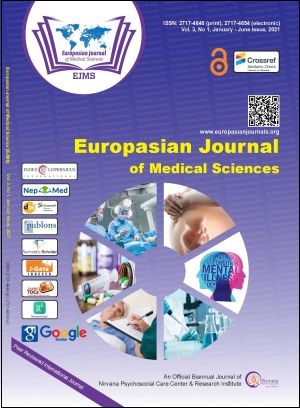Orthodontic Management of Skeletal Class-II Malocclusion with Horizontally Impacted Maxillary Canine: A Case Report
Keywords:
Canine Impaction, Class II malocclusion, Growth modification, Twin block applianceAbstract
Management of skeletal class II relation in growing patient require careful evaluation of growth status, proper diagnosis and treatment plan to address the patient’s need. Twin block is the appliance of choice among functional appliance to correct the skeletal class II malocclusion due to its acceptability by the patient and simplified design. Maxillary canine impaction is the second most prevalent impaction after the third molars. Treatment of maxillary canine impaction is usually a challenge to orthodontic approach as the defect lies in the esthetic region of the jaw.
This case report describes the orthodontic management of a 9 years male patient having skeletal Class II malocclusion with horizontally impacted maxillary canine. Some modifications in the treatment mechanics are deemed essential to address the patient’s need for achieving the optimal esthetic and to improve the occlusion.
Twin block is beneficial for the treatment of skeletal malocclusion in a growing patient to achieve the maximum benefit. The orientation of impacted teeth may change from horizontal to favorable one, hence it should be considered a viable treatment alternative. In such case, early diagnosis and interception at the right time along with radiographic follow-ups are necessary to achieve successful results.
Downloads
Downloads
Published
How to Cite
Issue
Section
License
Copyright (c) 2021 Sanjay Prasad Gupta, Shristi Rauniyar

This work is licensed under a Creative Commons Attribution 4.0 International License.
The author(s) retain the ownership of the copyrights for their work published in EJMS without any restrictions. Upon submission, the author(s) grants EJMS a license to publish, including to display, store, copy, and reuse the published content.
License to Publish
By submitting a manuscript to EJMS, the author(s) grant the journal a non-exclusive license to:
- Publish and distribute the content in all formats, media, and platforms (both existing and future), while identifying EJMS as the original publisher.
- Reproduce, display, and store the content in both print and online formats, including institutional and digital repositories.
- Translate, adapt, and summarize the work, including reprints, extracts, and abstracts.
- Develop derivative works based on the original content.
- Include the work in electronic databases and provide links to third-party materials.
Creative Commons Licensing
In addition to EJMS’s publishing rights, authors grant third parties the right to use, share, and distribute their work under the Creative Commons Attribution 4.0 (CC BY 4.0) International License. This allows unrestricted use of the content, provided proper attribution is given to the original author(s) and the journal.

